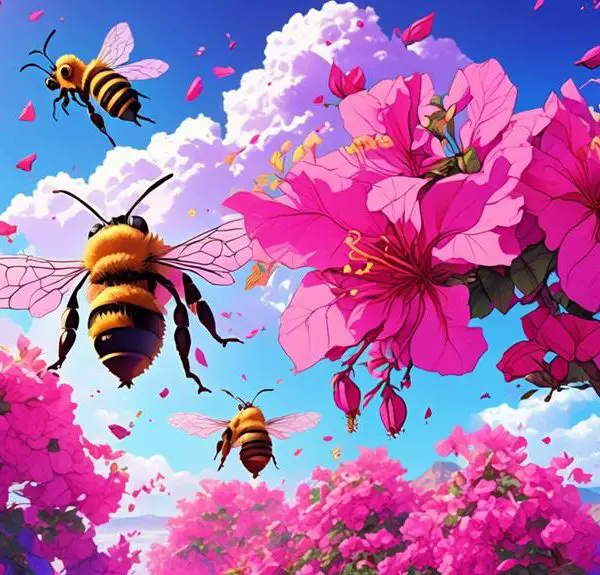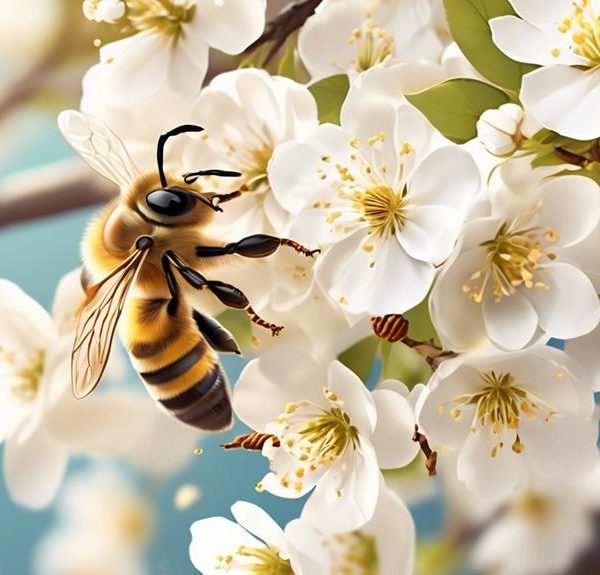Yearning to discover if bees are attracted to boxwood? Delve into the intricate relationship between these buzzing creatures and your favorite landscaping plant.

Do Bees Like Boxwood
Just as you're pondering over whether bees like boxwood, it's interesting to note that many others are asking the same question. You're not alone in your curiosity about this common landscaping plant and its potential role in supporting our buzzing friends.
The relationship between bees and plants is a complex one, and boxwood's place in this intricate web is not as straightforward as you might think. As a gardener, understanding this dynamic can be crucial for the health and prosperity of your garden, and it might just change the way you view your leafy, green boxwood.
Intrigued? Let's unravel this mystery together.
Key Takeaways
- Bees are primarily attracted to sweet-smelling flowers with abundant nectar, but may visit boxwood if it is the only source of pollen and nectar in a barren landscape.
- Certain bee species, such as small carpenter bees, may be attracted to boxwood for nesting sites.
- Boxwood provides a year-round source of nectar and pollen for bees, with its dense foliage offering shade and protection in summer, continued blossoming in fall, and leaf retention in winter providing shelter.
- Creating bee-friendly gardens with a variety of native plants that bloom at different times is crucial for supporting a diverse bee population.
Understanding Bees and Pollination
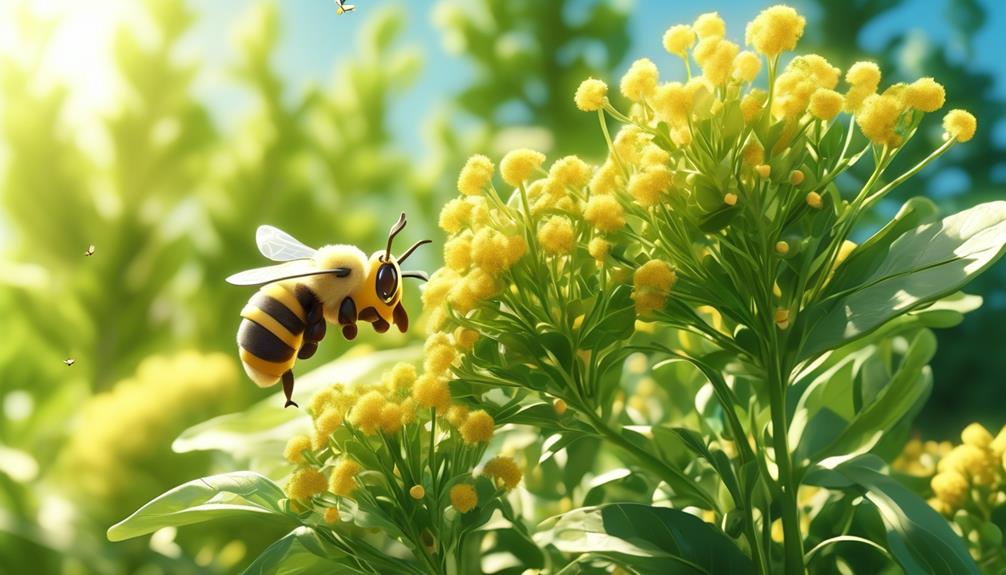
Before we delve into whether bees are attracted to boxwood, it's crucial to understand the basics of bee behavior and the process of pollination. Bees are vital pollinators, transferring pollen from the male parts of a flower to the female parts, enabling fertilization and the production of seeds. This process isn't random but directed by the attraction of bees to certain flowers.
The attraction isn't all about color, as you might think. It's also about scent and nectar. Bees are particularly drawn to sweet-smelling flowers that produce abundant nectar. It's their primary food source and they've evolved to detect it effectively.
Similarly, bees have a keen sense of smell, which they use to locate flowers from a distance. The scent of a flower is like a beacon, signaling its availability to passing bees. However, not all flowers are equally appealing. Some produce stronger scents and more nectar than others, making them more attractive to bees.
Understanding these factors is key to predicting bee behavior. So, when we turn our attention to boxwood, we'll consider not just its color, but its scent and nectar production too.
Boxwood: A Brief Overview
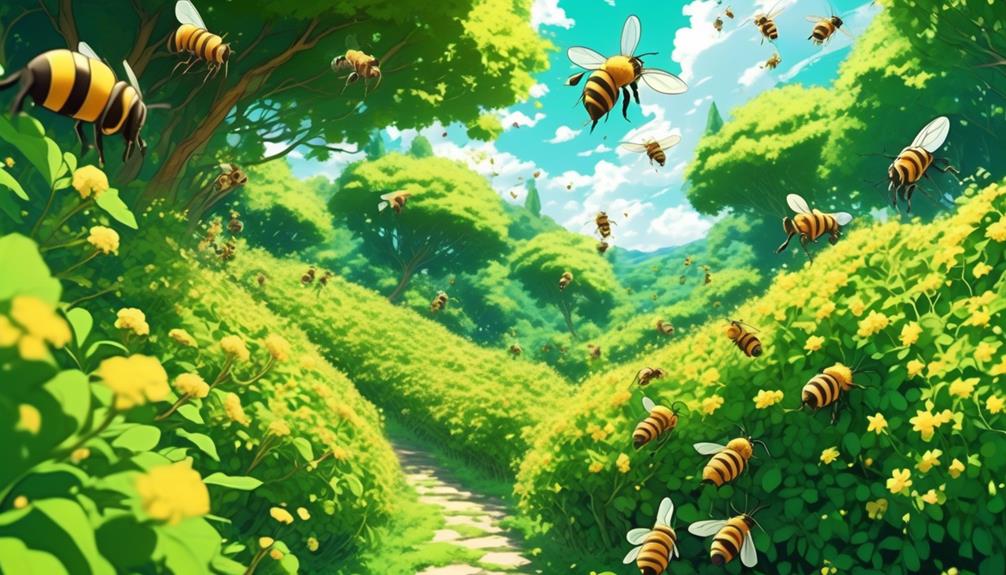
Now that we've examined the factors influencing bee attraction, let's shift our focus to boxwood, a plant you might be considering for your garden.
Boxwood, scientifically known as Buxus, is a genus of about 70 species of evergreen shrubs. They're hardy plants, well-suited to a range of climates and soils. Characterized by dense foliage, the boxwood's small, glossy leaves provide a lush, green backdrop throughout the year.
But beyond aesthetics, boxwood also exhibits several characteristics that potentially impact bees. One key factor is its bloom time, typically in late spring. This coincides with the period when bees are actively foraging for nectar and pollen. Plus, its tiny, light yellow flowers, though not particularly showy, emit a strong, sweet scent that could attract bees.
However, boxwood's dense foliage might pose a challenge. Bees could find it difficult to navigate through the thick leaves to reach the flowers. It's also worth noting that not all boxwood species flower prolifically, which could limit their attractiveness to bees.
Bees' Attraction to Boxwood
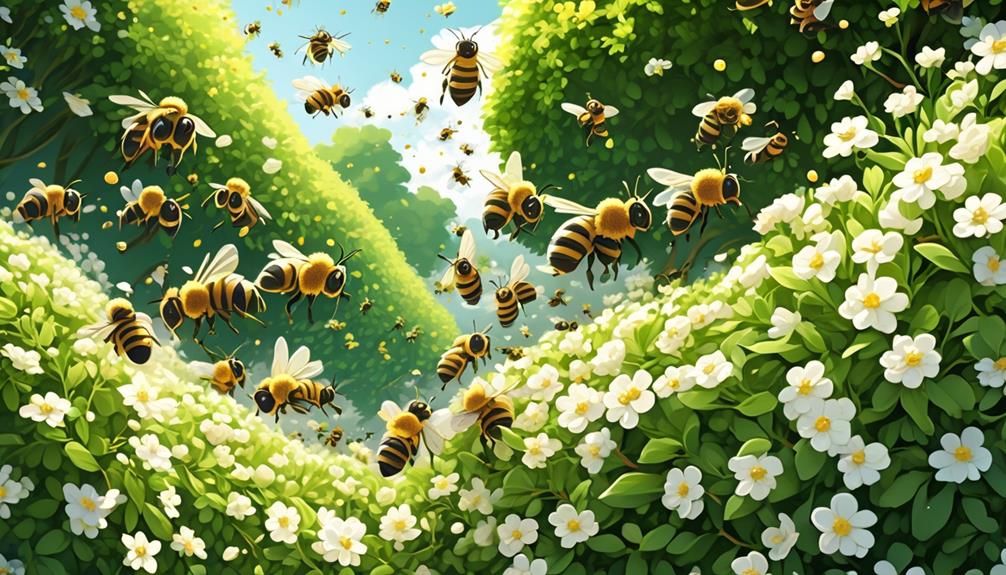
Despite boxwood's potential barriers, you might still be curious about whether bees are attracted to these evergreen shrubs. The answer is complex, reflecting the nuanced nature of ecological interactions.
Boxwood, with its dense foliage and scant blossoms, isn't a bee's first choice. It doesn't provide the same nectar-rich buffet as plants like lavender or sunflowers. But that doesn't mean it's off the menu entirely. Bees are adaptable and will forage where necessary. If boxwood is the only source of pollen and nectar in a barren landscape, bees will visit it.
Moreover, boxwood may hold a subtle allure for certain types of bees. Some species, like the small carpenter bee, prefer nesting in woody habitats. Boxwood's thick, woody stems may provide ideal nesting sites, attracting these bees even if the plant isn't their preferred food source.
It's also worth noting that bees' attraction to boxwood could vary seasonally. During periods of floral scarcity, boxwood's meager offerings might become more attractive.
Boxwood in Bee-Friendly Gardens
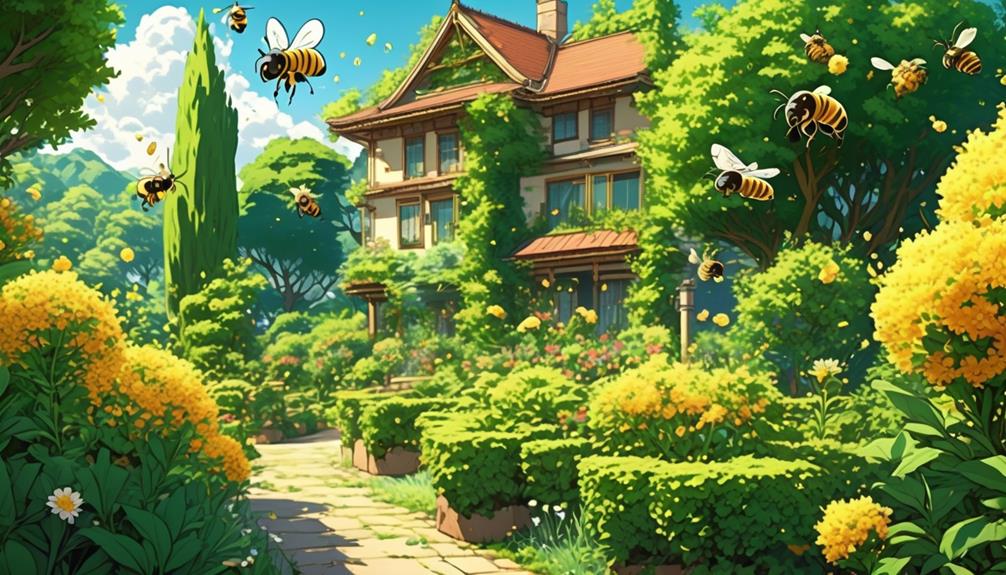
Taking into account the complex relationship between bees and boxwood, let's consider how incorporating this evergreen shrub into your garden could potentially benefit the local bee population. Boxwood offers an excellent source of nectar and pollen throughout the year, essential for bees.
But how does a boxwood-centric garden look? Let's explore that in the table below:
Season | Boxwood Benefit | Impact on Bees |
|---|---|---|
Spring | New growth | Provides early nectar |
Summer | Dense foliage | Offers shade and protection |
Fall | Continued blossoming | Extends nectar supply |
Winter | Retains leaves | Gives shelter |
The table demonstrates that boxwood can provide year-round benefits for bees. Not only does it offer sustenance, but it also gives them a safe haven. However, remember that a varied garden is crucial for supporting a diverse bee population. Include other native plants that bloom at different times to supplement the boxwood's offerings.
Therefore, while boxwood alone isn't a complete solution, it's a valuable piece of the puzzle in creating a bee-friendly garden. Analyze your garden's current state and make strategic decisions to support our buzzing friends.
Conservation Efforts for Bees
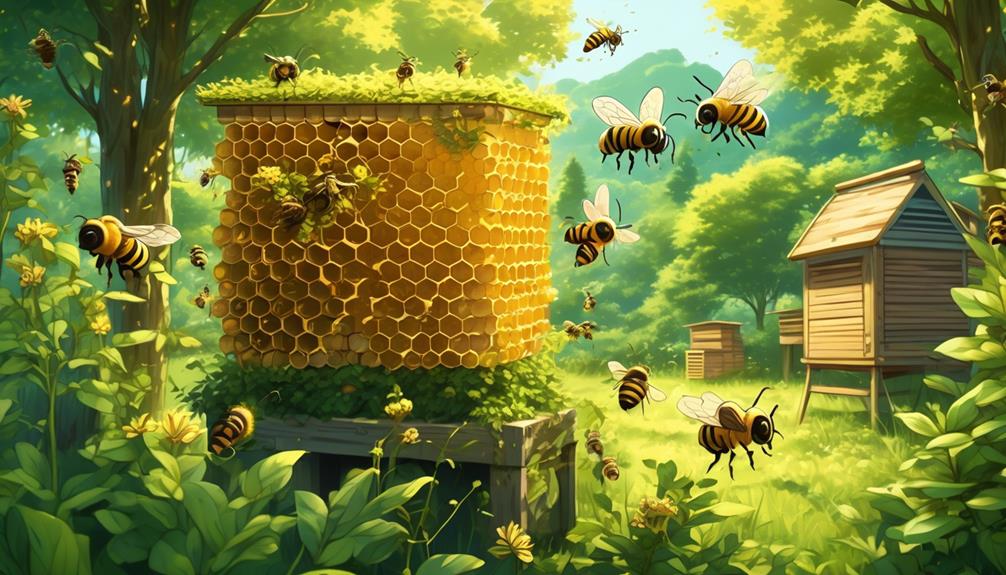
In recognizing the essential role of bees in our ecosystem, let's delve into the various conservation efforts that have been implemented to protect and bolster their populations. You might be surprised to learn that these initiatives are both large-scale and individual.
Government agencies and non-profit organizations worldwide have launched initiatives to conserve bees. They've created habitats, limited pesticide use, and funded research to combat Colony Collapse Disorder (CCD). CCD, a phenomenon where worker bees mysteriously abandon their hives, has dramatically reduced bee populations.
On an individual level, you can contribute to bee conservation. This could be as simple as planting bee-friendly plants, like boxwood, in your garden. Avoid using pesticides, which can be harmful to bees. Instead, practice organic gardening and encourage local farmers to do the same.
Moreover, support local beekeepers who implement sustainable practices. Buying local honey not only supports the local economy but also helps maintain the local bee population.
Frequently Asked Questions
Are There Specific Types of Bees That Are More Attracted to Boxwood?
You're wondering if certain bees prefer boxwood. Well, all bees aren't attracted to the same plants.
While honeybees and bumblebees might flock to boxwood, other types might not. It's because bees have preferences based on their species' specific needs and behaviors.
Can the Presence of Boxwood Plants in a Garden Affect the Overall Health of Bees?
Yes, having boxwood plants in your garden can indeed impact the health of bees. They're attracted to the nectar and pollen that boxwoods produce, which provide essential nutrients.
However, if boxwoods are treated with pesticides, they can harm bees. Therefore, you should ensure your plants are organic and free from harmful chemicals.
This way, you're not only attracting bees but also promoting their health and survival.
What Other Plants Can Be Paired With Boxwood to Create a More Bee-Friendly Garden?
You're considering what plants pair well with boxwood for a bee-friendly garden, right? It's smart to add plants like lavender, foxglove, and sunflowers. They're nectar-rich and attract bees. Combine these with your boxwood.
Remember, diversity in plant types encourages more bee visits. Also, native plants will support local bee populations better. Be mindful of flowering times to ensure a continuous food source.
This approach helps create a balanced, bee-friendly environment.
How Does the Season or Climate Influence Bees' Attraction to Boxwood?
Climate and season significantly influence bee activity. In colder seasons, you'll find fewer bees as they hibernate.
Conversely, in warmer seasons, bees are more active and attracted to blooming plants. Depending on your region's climate, boxwood may or may not be in bloom, which affects bee attraction.
Are There Any Potential Risks or Downsides to Planting Boxwood in a Bee-Friendly Garden?
When designing a bee-friendly garden, you may wonder if there are downsides to planting boxwood. While they do attract bees, they're not the best choice. They can harbor diseases that harm bees, their dense foliage doesn't provide varied nutrition, and they bloom for a short period.
Conclusion
So, you've learned bees aren't particularly drawn to boxwood. While these shrubs offer lush greenery, their appeal to bees is limited. Despite this, they can still play a role in bee-friendly gardens, serving as a backdrop to bee-attracting plants.
Their inclusion, therefore, comes down to strategic garden design. Remember, your efforts can significantly contribute to bee conservation, even with the unassuming boxwood. It's a careful balance, but one vital to sustaining our buzzing friends.

